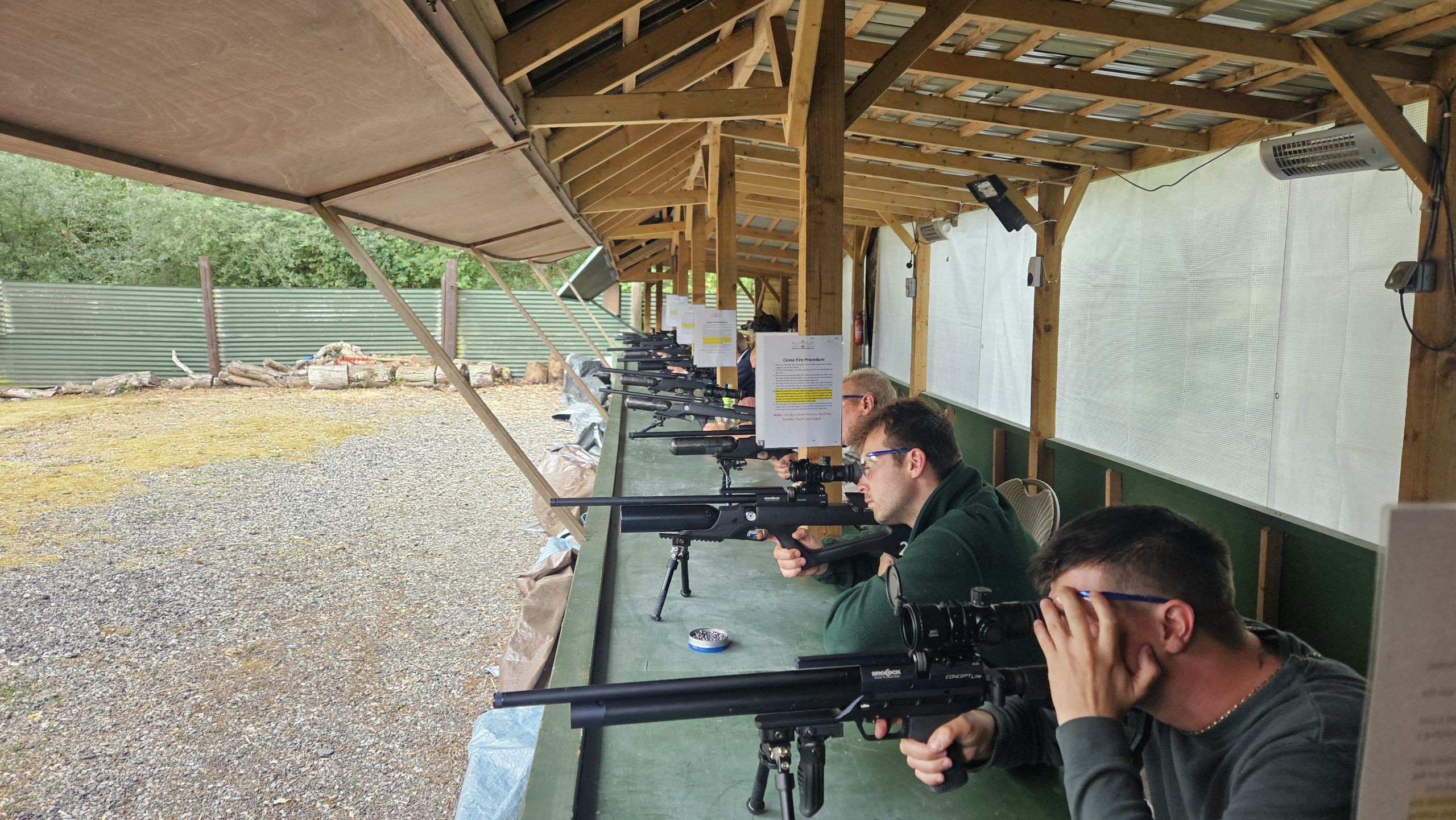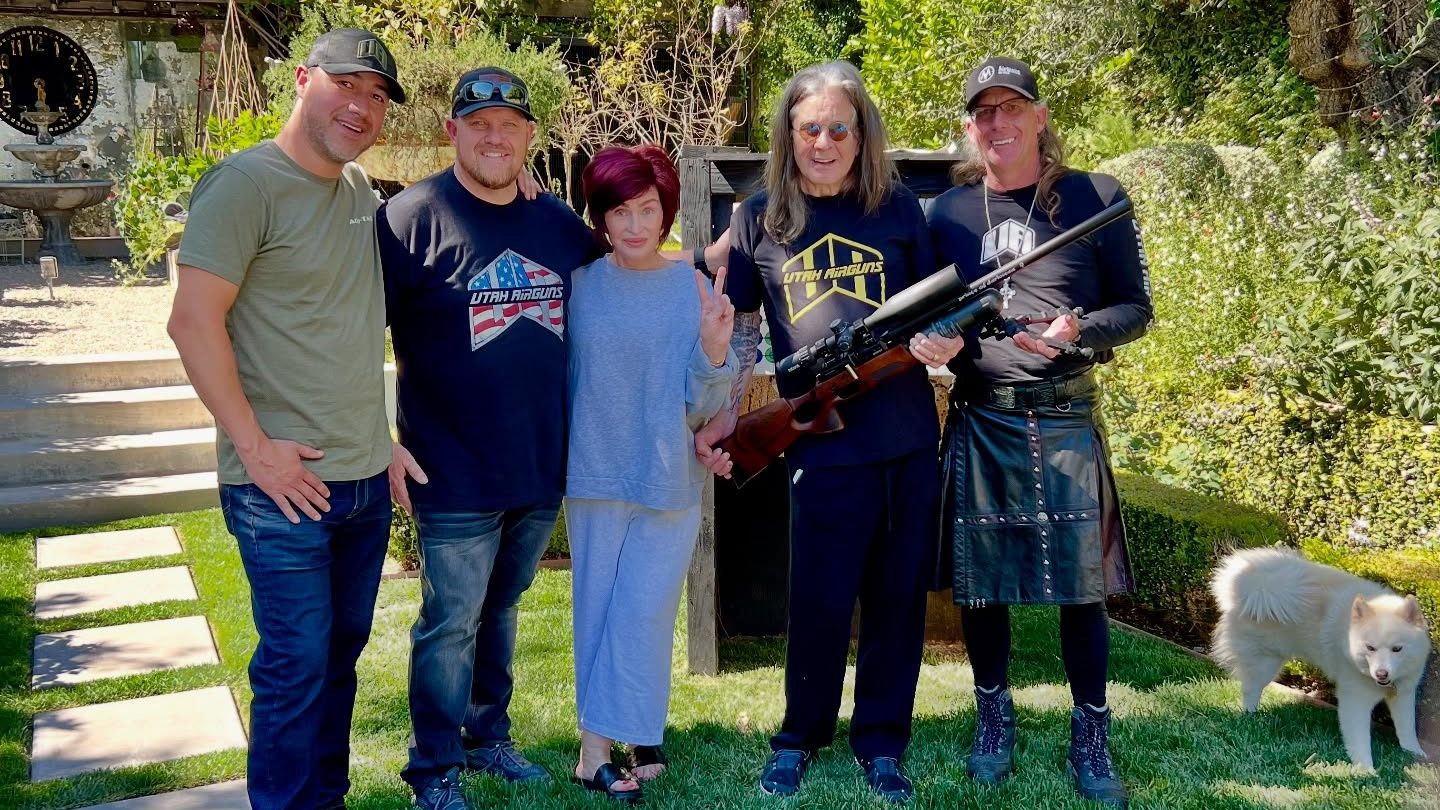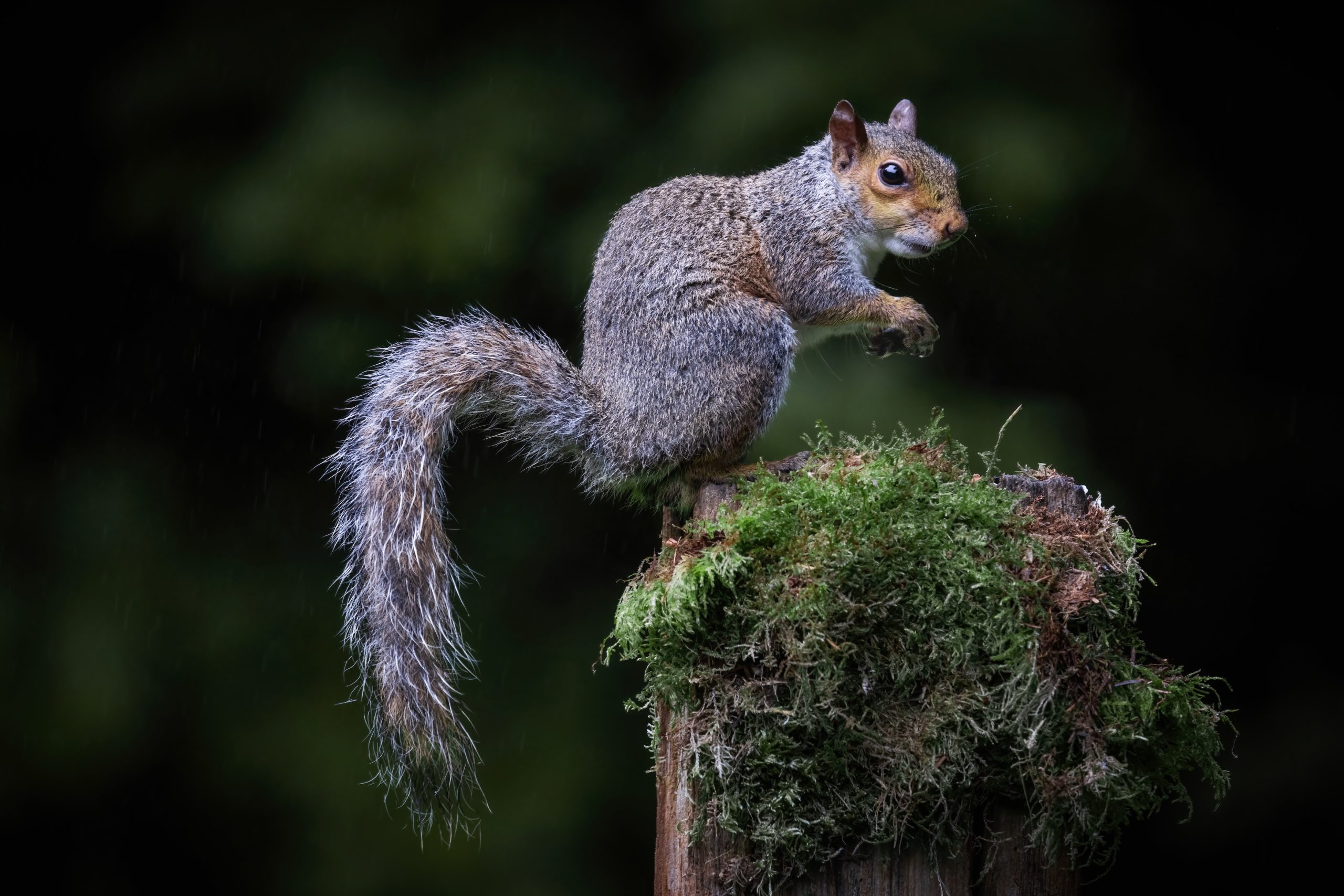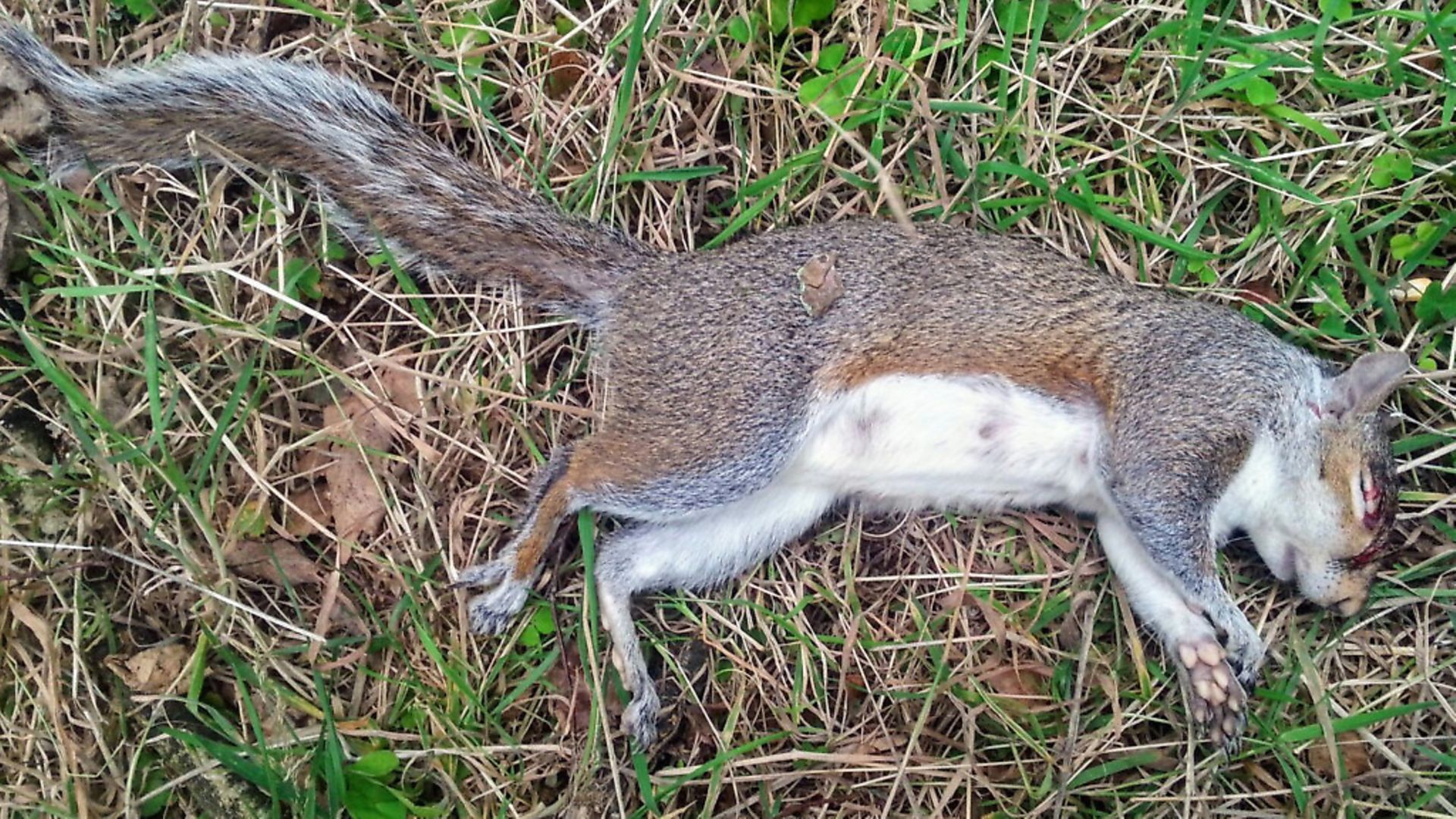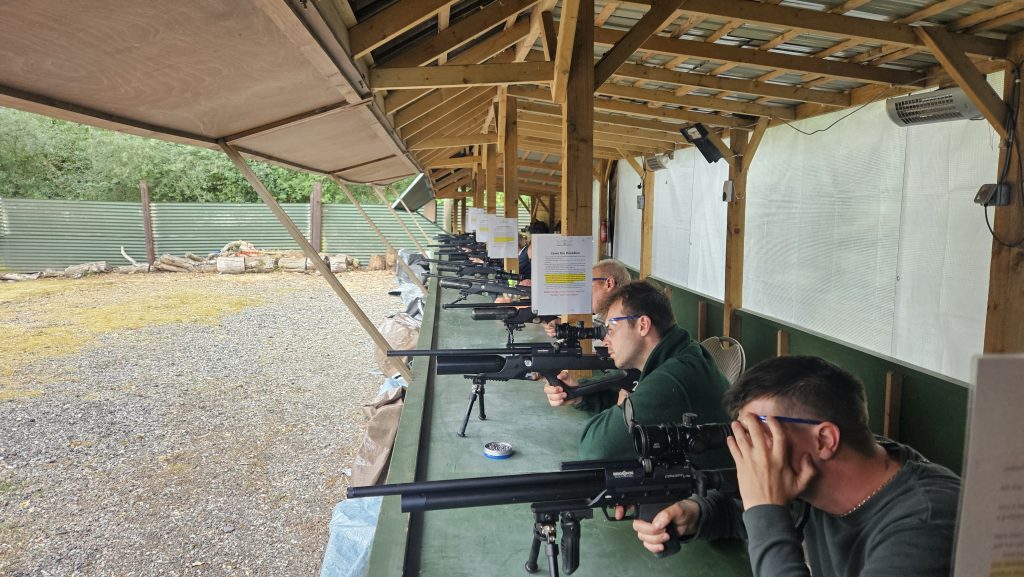- News
- Gear
- Airguns
- Shooting
- Get Involved
- More
-
-
More
-
-
News
National Trust deploys air rifle volunteers for grey squirrel control
By Hollis Butler (Group News Editor)
-
-
-
-
A morning’s hunt for grey squirrels
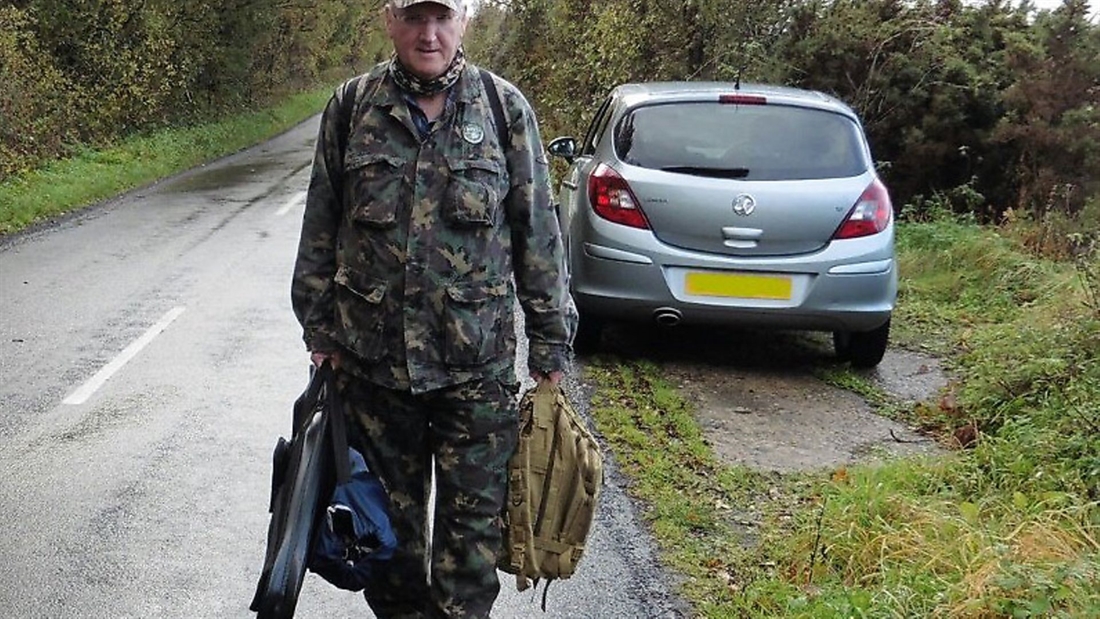
Peter Yeats has an early appointment with a troublesome grey squirrel
For goodness’ sake! What’s that din?” Mmm. The alarm, and the recollection of last night’s plan. I silenced the alarm as quickly as possible and wondered why I was leaving a warm, cozy bed when it was still quite gloomy outside, but there was a grey awaiting my attention.
Red squirrel conservation is a serious business, and quite a learning curve. Regular readers will know that I enjoy access to two experienced and helpful conservationists, so feeders, their siting and the feed mixture, hide/blind design for the job and squirrel activity by time windows, have all been explained to me.
Checking your feeders and knowing what is going on around them is the key to success. Mine were relocated after receiving expert advice, and then were almost wrecked as Perspex front covers were pulled out and flung a metre or so from the tree, and the feed strewn about. An urgent evening hunt was called for and the culprit, an enormous female grey, was dispatched at 7.50pm – late for greys to be feeding.
Normal activity at the feeders resumed, as did the pattern for using them – check and top up, if needed, every other day. Set up a trail-cam, if activity isn’t clear; e.g. feed taken from the feeders’ platforms, but no hair on the double-sided tape and no feed taken from inside the feeders.
The previous evening, I arrived to retrieve the trail camera and check the feeders, but even before I got there, I saw a grey feeding on the ground and made a mental note to carry my rifle on future feeder checks. The grey spotted me, climbed to a high branch, flicked an irritated tail and disappeared into the canopy.
I topped up the feeders and checked the trail-cam footage, confirming the grey’s afternoon feasting. Cue an early morning session from my pop-up hide. When I got home, I arranged my gear for an early morning, quiet departure and set the alarm for 6.30am.
Delightful view
Following my rude awakening, I crept quietly from the bedroom, put on my shooting gear, packed the car and left for my permission. Although I had to stop whilst a young deer crossed the country lane – an enjoyable by-product of these early morning sessions – by 7.30am, I was popping up my hide and putting all my kit inside. I took a quick check of the average side wind speed, with the anemometer, to be certain of windage, a quarter of a mil dot, and then settled in. Once the seat was sorted and the gun set on the sticks, I opened the zip to allow a good field of view and a dark interior.
I double-checked that scope focus and magnification were set to show both feeders sharply in a single view through the lens, and rechecked the ranges of other landmarks with my rangefinder, to be ready for any route of approach or departure by any greys.
I settled down to watch for my grey, and as the day brightened I was able to enjoy the delightful view of nature that I hadn’t seen until I began early-morning stake-outs from my hide. Rabbits, so difficult to stalk, came in twos and threes to feed on fallen maize, peanuts and sunflower seeds. Of course, these can’t be shot because they encourage greys to think that the feeders are safe. Nuthatches, various tits and the occasional jays add colour, but you must hold your fire and stay alert.
Of course, it would be better if there was no need to be there, sitting for two to three hours. Indeed, ‘no greys’ would be a measure of success in areas also occupied by threatened reds, but there were reds quite near and I knew that at least one grey was using my feeders so this waiting game wasn’t wasted and I watched them closely, occasionally taking in other wildlife.
Satisfaction
The first indication of an approaching grey is the departure of small birds or the surprise of some unexpected movement disturbing my peripheral vision, but occasionally, it is like this time – a seemingly magical materialisation. I blink and what was not there a moment ago is right before my eyes.
My grey was head down, about 40cms/16inches above the right-hand feeder, having arrived whilst my attention was less than it should have been. This is when preparation and staying calm really counts. Knowing precise windage and aiming point, and sitting with the rifle on the sticks, means getting on aim immediately by just putting my eye to the scope. I prefer to take the first clear shooting chance, knowing the shot to impact time is just over a tenth of a second.
The grey descended to the feeder and placed its forepaws on the lid, then raised its head. I’d tracked the aiming point, and this was the moment I’ve waited for, so I shot and ‘lights out’. The grey dropped lifeless to the foot of the tree – that’s one fewer potential carrier of squirrel pox and killer of reds.
It’s 8.05am and I stayed a further two hours, waiting for another grey to show up, but it didn’t, so I checked the feeders, buried the shot grey and then packed up to head home for breakfast. The grumble at my early morning alarm had been replaced by the satisfaction of a successful hunt and a privileged view of wildlife. It’s this rare combination of magical moments whilst helping our native species that is so satisfying. In the enjoyment of our glorious sport, what more could one ask?
Read more…

